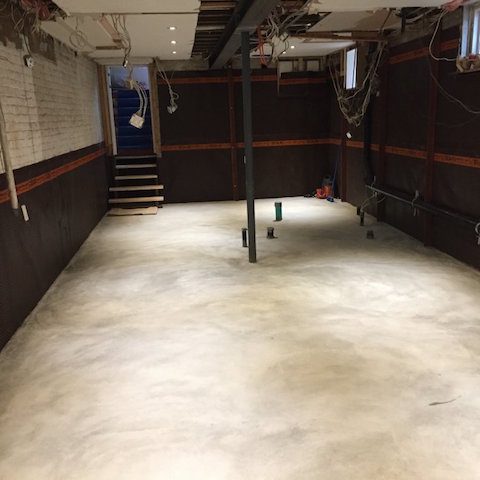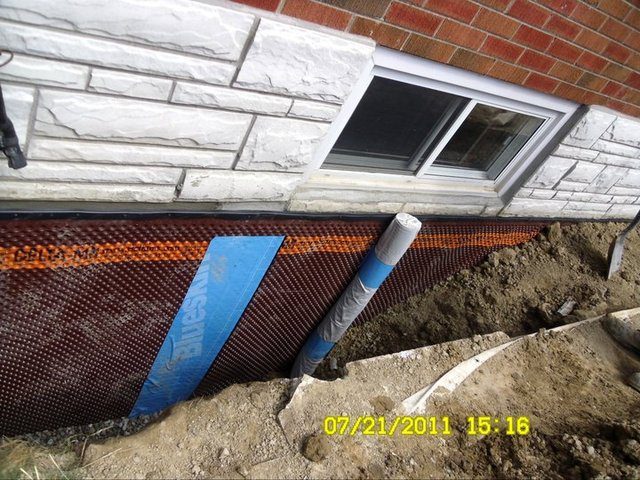Lots of homeowners, especially first time buyers, like the idea of being able to convert part of their new property into some sort of rental space. The extra income will help pay the mortgage and who doesn’t want that? The logical place to look is the generally unused basement of the home. In new or older homes, the basement is frequently unfinished and will take some work to prepare it for potential renters. What was once a dark dreary space can become valuable rental space; however, there are many factors to consider.
Older Homes
Basements in older homes were not originally intended to be used for living space. They most often are used to hold all the mechanics of the home such as the furnace, plumbing, water tanks, and perhaps include some limited storage. The ceilings are so low that the average person needs to duck their head to move around. If you want to make this space comfortable you will need to find a way to add head room!
Underpinning your home will allow you to add the necessary headspace as well as include all the wiring and ventilation to make your basement welcoming to a tenant. You will also be able to remove existing walls and re-configure your space to allow for additional bedrooms or a kitchen area.

Underpinning involves lowering the base of your foundation by digging a series of holes below the footing of the home’s foundation. The holes are then filled to enable the earth in the basement to be dug out. This procedure provides you with strengthened foundation support for your home and more flexibility to finish the interior as you like. You could also consider benching the foundation walls which involves digging a trench and adding a supporting wall leaving you with a bench-like structure. Benching does not give you the same amount of living space but does add useful storage space as you can add bookcases or shelves to the top of the new wall.
Newer Homes
Most new homes do not have the same limited headspace issues but were not always designed with rental space in mind. You may want to move weight-bearing walls to change the layout of your basement which can be done through proper underpinning procedures.
Waterproofing your basement
If you are considering renting your basement, you need to protect your tenants and yourself from potential water damage. Basements, being the lowest portion of your property have the greatest potential for taking in water or extra moisture from outside sources. Before you start any work to finish your basement you should undertake a waterproofing project. It just makes sense.
You need to fully inspect the basement to check for any problems with the floors or walls. The first step is to use your nose! Do you smell anything dank or musty? That is usually a sign of excess moisture and can be an early indicator that your basement is hiding a place where mould or mildew is forming.
Do you see cracks on the floors or walls? While they may be small cracks now, they will expand when water gets in and freezes. Water looks for the easiest path to flow and a crack offers that channel. If you see any white chalky stain on the walls or floor, you may be having water seep in through the concrete bringing minerals and salts to the surface.
Make sure the weeping bed drainage system has been properly installed. If there are there drains in the flooring that have been blocked or covered up, your built-in solution to extra water in the basement will have been defeated.
Windows and window wells can be another weakness that allows water into your basement. Make sure there are no cracks or problems with the caulking or sills. Doors, especially to the outdoors should be checked for airtightness.
You can also have your foundation walls professionally waterproofed with either an exterior or interior process. A physical membrane is added to the foundation walls to ensure no water gets inside. Depending on the budget you have will determine which process you want to use.

Other considerations
Check with your local municipality about zoning or permit issues with renting out your basement to tenants.
Make sure you have an occupancy agreement or lease with your tenant. This can protect both of you and can cover issues such as the use of common areas or the back yard.
Check with your insurance provider to determine your responsibilities with regard to potential problems that might impact your tenant.
Using professionals
If you decide to take on projects in your home to expand your basement for future tenants or to simply have more comfortable living space in your home, you should use professionals. Underpinning your home’s foundation and having your basement waterproofed are not in the Do-It-Yourself category. City Wide Group has more than 50 years in underpinning and waterproofing basements in the Greater Toronto Area. Their experienced technicians will fully inspect your property and set out the parameters of what needs to be done to create additional space and make sure it stays dry. They will obtain the necessary work permits and treat your home like their own. Once the work is done, you will also have a fully transferable life-time warranty that you can show potential tenants and future buyers.










